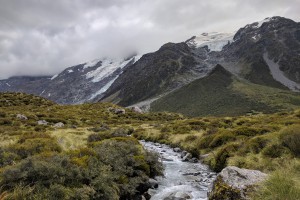Using algae as long term indicators
In this section
Using the microscope methods and identification keys in this guide, school groups (with access to simple compound microscopes) can easily use algae as long term indicators. The trick is to sample on lots of occasions (perhaps monthly for a year) so you can become familiar with the types of algae that normally live at a site, how they build up during periods of low flow, how their composition changes with season and how their abundance declines after floods. If you know what’s “normal” at a site, you’ll be better able to judge what’s abnormal (e.g. unusual smothering of the bed by algae, or unusual accumulation of foul-smelling algae) and possibly worth asking your regional, city or district council to investigate.
Some groups might be interested in how the stream biology changes over the years as the riparian vegetation changes. Riparian planting programmes may have been designed to increase shade over a stream to control summer water temperatures and algae blooms. It’s easy to make a rough estimate of the percentage cover of the streambed by algae on each stream visit, and this data can be complimented by a simple breakdown of the main types of algae dominating the streambed. You can compare your percent algae cover data with an estimate of the percentage of the stream shaded by riparian vegetation on each sampling date. Remember that percentage algae cover will be affected by recent flow history (increasing during low flows and decreasing after high flows) so it’s important to note the recent weather or flow history leading up to each sampling date, or time your sampling to occur only after a known
